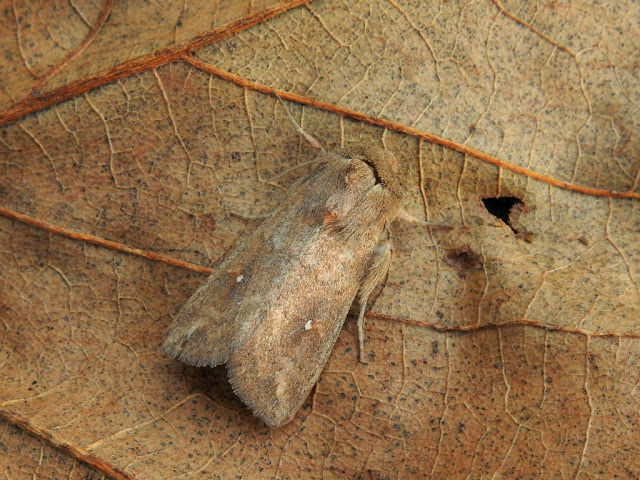Shortly after 07:00 this morning I sat down in the West Bay shelter and unsheathed the seawatching tool. With its 82mm objective and 25-75x zoom eyepiece, not much gets away. Typically, today there was very little to get away. Still, the few passing birds that bothered with this bit of Lyme Bay were nailed good and proper with my 21st-century glass. In the old days I would have been struggling with poor light transmission, feeble magnification, psychedelic colour-fringing, and the inevitable consequence of repeated drenching - a steamed-up interior. My distant young Gannets would no doubt all have been possible Great Shearwaters, and consequently my pulse rate up and down like the proverbial. Yes, back then a seawatch was an excellent cardio-vascular workout, rather than the sedentary artery-clogger that it is today.
Just as I was thinking of packing up in disgust, a WhatsApp message from Ian McLean in Seaton: 'Two Velvet Scoter east'. So I didn't pack up. I parked my disgust and waited. And 24 minutes later they hove into view. Velvet Scoter is a decent seawatching prize locally. Had I not known they were coming, I certainly would not have seen them. Disgust would have won out, and I'd have been at home. Later I would have heard about them, how they'd passed Seaton and then West Bex, and been thoroughly gripped. Just think of all the emotions I would have experienced: frustration, envy, anger, self-pity. Overcoming the disappointment of frequent grippage was meat and drink for birders of yore, and built a hardy resilience sadly missing today. WhatsApp caused me to miss out on a potentially character-building experience.
As the Velvet Scoters passed me, my modest camera captured this...

|
|
The 2 Velvet Scoters that I knew were coming. |
Birders always enjoy the cut and thrust of a lively discussion. What sex were those Velvets? What age? Putting your observations into words or - even better - field sketches, making a case for conclusions drawn, arguing that case... Never mind the facts, in the absence of photos it all came down to who was the the most articulate, the best artist, or the loudest. These are not just handy attributes for the bullish birder of course, they are life skills.
Digital cameras have taken all that away. Your wordy description; your clinical artwork; your bold, unassailable argumentation... All for nought.
'Mate, that's rubbish. You're wrong. Just look at the pics. Both pale on the belly; they're first-winter birds. The one on the left is browner, with the face pattern of a female. The one on the right is blacker, without that face pattern; it's a male.'

|
|
First-winter male (R) and female (L) Velvet Scoters. |
Naturally, as a southern softy I am already at a disadvantage when it comes to strength of character, and modern technology has simply made things worse. Perhaps I need to ditch the camera, leave the phone at home, and search eBay for a nice Nickel Supra. A few months of olde worlde birding hardship might do me some good. Possibly I have forgotten the art of turning blurred, hazy birds into species they are not. Can I still write a feather-perfect description from the briefest of mostly-obscured views? Or dash off an intimate 'field' sketch with really not very much reference to a field guide? These are skills once universal among birders of a certain age. But now? All lost, I suspect.
Aren't they?































.jpg)






















